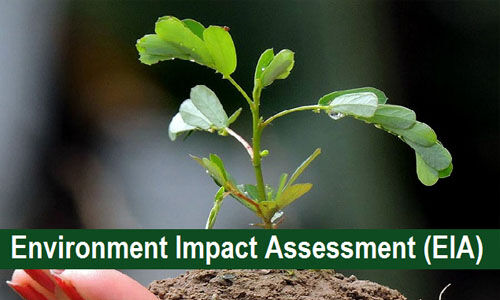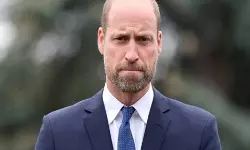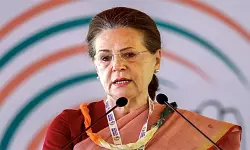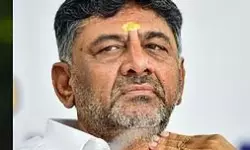- Home
- Latest News
- news line
- Districts
- Kerala
- India
- World
- Sports
- Videos+
- Arogyathejas
- Around The Globe
- Bomb Squad
- Charithrapadham
- Cinimayude Varthamanam
- Cut 'n' Right
- Editors Voice
- Hridaya Thejas
- In Focus
- In Quest
- India Scan
- Kalikkalam
- Marupaksham
- NEWS LINE
- Nireekshanam
- Pusthakavicharam
- RAMADAN VICHARAM
- Samantharam
- Shani Dasha
- Swathwa Vicharam
- Vazhivelicham
- VideoNews
- World in Words
- Yathra
- voice over
- Sub Lead
''ഇഐഎ ഭേദഗതി നിര്ദേശങ്ങള് തള്ളിക്കളയുക. പിന്വലിക്കാന് ഇ മെയിലിലൂടെ സമ്മര്ദ്ദം ചെലുത്തുക''- ശിവപ്രസാദ്
ഇഐഎ ഭേദഗതി നമ്മെ മാത്രം ബാധിക്കുന്ന വിഷയമല്ല. വരും തലമുറകളെ ഒന്നടങ്കം നശിപ്പിക്കുന്ന ഒരു ഭേദഗതിയാണ്. ഇഐഎ ഭേദഗതിക്കെതിരേ ശിവപ്രസാദ് ഫെയ്സ്ബുക്കില് എഴുതിയ കുറിപ്പ്

ശിവപ്രസാദ്
പരിസ്ഥിതി ആഘാത വിലയിരുത്തല് (ഇഐഎ) എന്ന കേന്ദ്രത്തിന്റെ പുതിയ ഭേദഗതിയില് പൊതുജനത്തിന് അഭിപ്രായമറിയിക്കാനുള്ള അവസാന തിയതി ആഗസ്റ്റ് 11 വരെയാക്കി ഡല്ഹി ഹൈക്കോടതി ഉത്തരവിറക്കിയത് അറിഞ്ഞിരിക്കുമല്ലോ?
1972ല് സ്റ്റോക്ഹോം വിജ്ഞാപനം വരുന്നതിന് ശേഷമാണ് 1974ല് ജലമലിനീകരണത്തിനും 1981ല് വായു മലിനീകരണത്തിനുമെതിരെ ഇന്ത്യയില് നിയമം വരുന്നത്. എന്നാല് 1984ല് ഭോപ്പാല് ദുരന്തമുണ്ടായതിന് പിന്നാലെയാണ് ഇന്ത്യയില് പരിസ്ഥിതി മലിനീകരണത്തിന് എതിരായ ഒരു നിയമം 1986ല് നിലവില് വരുന്നത്.
ഈ നിയമത്തിന് കീഴില് 1994 ലാണ് ആദ്യമായി ഇന്ത്യ ഇഐഎ കൊണ്ടുവരുന്നത്. എല്ലാ പദ്ധതികളും ഇഐഎയ്ക്ക് അനുസൃതമായി വേണം ആരംഭിക്കാന്. എന്വയോണ്മെന്റല് ക്ലിയറന്സ് ലഭിച്ച ശേഷം മാത്രമേ പദ്ധതിക്ക് അനുമതി ലഭിക്കുകയുള്ളു. 1994ലെ ഇഐഎയ്ക്ക് പിന്നീട് 2006ല് ഭേദഗതി വന്നു.
നിലവിലെ ഇഐഎ കരട് അംഗീകരിക്കപ്പെട്ടാല് ഉണ്ടാകുന്നത് അപ്രതീക്ഷിത ദുരന്തങ്ങളായിരിക്കും. ഇനി ഒരു സ്ഥാപനം തുടങ്ങാന് പരിസ്ഥിതി മന്ത്രാലയത്തിന്റെ അനുമതി ആവശ്യമില്ല എന്ന നില വരും. ഈ ഭേദഗതി പ്രകാരം കമ്പനി ആരംഭിച്ച് കഴിഞ്ഞ ശേഷം എന്വയോണ്മെന്റ് ക്ലിയറന്സിന് അപേക്ഷിച്ചാല് മതി. ഇത് വരുത്തിവയ്ക്കുന്ന അപകടത്തിന് ഉദാഹരണമാണ് വിശാഖപട്ടണത്തെ വിഷവാതക ദുരന്തം. വിശാഖപട്ടണത്തെ എല്ജി പോളിമറിന് എന്വയോണ്മെന്റ് ക്ലിയറന്സ് ലഭിച്ചിരുന്നില്ല. അതായത് കണ്മുന്നില് നമ്മുടെ പുഴകളും വായുവുമെല്ലാം മലിനമാകുന്നത് കണ്ടാലും നമുക്ക് പരാതിപ്പെടാന് സാധിക്കില്ല.
കെട്ടിടത്തിന്റെ ചുറ്റളവ്നിലവില് 20,000 സ്ക്വയര്ഫീറ്റോ അതില് കൂടുതലോ ചുറ്റളവുള്ള എല്ലാ കെട്ടിടങ്ങള്ക്കും പരിസ്ഥിതി ക്ലിയറന്സിനായി അപേക്ഷിക്കേണ്ടുണ്ട്. എന്നാല് ഇഐഎ 2020 പ്രകാരം 1,50,000 സ്ക്വയര്ഫീറ്റില് കൂടുതലുള്ള കെട്ടിടത്തിന് മാത്രം ഈ അനുമതി തേടിയാല് മതി.
ഈ ഡ്രാഫ്റ്റില് പുതുതായി ഉള്പ്പെടുത്തിയിട്ടുള്ള ബി 2വില് നാല്പ്പതിലേറെ പദ്ധതികളാണ് ഉള്പ്പെടുത്തിയിട്ടുള്ളത്. ഈ പദ്ധതികള്ക്കൊന്നും ക്ലിയറന്സ് ആവശ്യമില്ല. നേരത്തെ ഒരു പദ്ധതിയെ കുറിച്ചുള്ള പൊതുജനങ്ങളുടെ ആശങ്കകള് തുറന്ന ചര്ച്ചയ്ക്ക് വയ്ക്കുകയും (പബ്ലിക് ഹിയറിംഗ്) ഇതിന് 30 ദിവസം നല്കുകയും ചെയ്യുമായിരുന്നു. ഈ സമയം 20 ദിവസമാക്കി വെട്ടിചുരുക്കിയിരിക്കുകയാണ്. മാത്രമല്ല വീഡിയോ കോണ്ഫറന്സ് വഴി പബ്ലിക് ഹിയറിംഗ് നടത്താമെന്നും തീരുമാനിച്ചതായാണ് റിപോര്ട്ട്. പലപ്പോഴും വന്കിട പദ്ധതികളില് ബലിയാടാകുന്നത് തികച്ചും താഴെ കിടയില് ജീവിക്കുന്ന കാടിന്റെയും കടലിന്റെയും മക്കളാണ്. ഒരു പദ്ധതിയെ കുറിച്ച് പഠിച്ച് വിദഗ്ധമായി അഭിപ്രായം രേഖപ്പെടുത്താനോ വിദഗ്ധരുടെ സഹായം തേടാനോ അവര്ക്ക് സാധിക്കില്ല. അനുവദിച്ച സമയം കൂടി വെട്ടിച്ചുരുക്കുന്നത് പൊതുജനത്തെ പൂര്ണമായും അകറ്റി നിര്ത്തുന്നതിന് തുല്യമാകും.
ഇത് നമ്മെ മാത്രം ബാധിക്കുന്ന വിഷയമല്ല. വരും തലമുറകളെ ഒന്നടങ്കം നശിപ്പിക്കുന്ന ഒരു ഭേദഗതിയാണ്. ഇതുവരെ ഇഐഎ നിയമമായിട്ടില്ല. കരട് മാത്രമേ തയാറായിട്ടുള്ളു. ഈ ഭേദഗതിക്കെതിരായ ആശങ്കകളും പ്രതിഷേധവും ആഗസ്റ്റ് 11 വരെ നമുക്ക് അറിയിക്കാന് സാധിക്കും. ഇതിനായി താഴെ കൊടുത്തിരിക്കുന്ന മെയില് ഐഡികളില് വിയോജിപ്പ് രേഖപ്പെടുത്തുക.
email IDs: eia2020-moefcc@gov.in, secy-moef@nic.in
പരാതി
Minister of Environment, Forests and Climate Change
Indira Paryavaran Bhawan
Jor Bagh, New Delhi
In March 2020, the ministry had proposed a draft notification to replace the 2006 document. The notification is at the stage of public comments. The new notification is being brought in order to make the process more transparent and expedient by implementation of an online system, further delegation, rationalization and standardization of the process.
The new notification includes certain provisions which could end up diluting the EIA process, especially the public consultation aspect. It provides for a reduction of time period from 30 days to 20 days for the public to submit their responses during a public hearing for any application seeking environmental clearance. It also requires that the public hearing process be completed in 40 days compared to 45 days under the 2006 notification. The main reason stated for reducing the time is that it would become easy for new investments to complete the formality of EIA.
The danger is that if adequate time is not given for the preparation of views, comments and suggestions to those who would be affected by the project, then such public hearings would not be meaningful. In the Samarth Trust Case, the Delhi high court had considered EIAs a part of participatory justice in which the voice is given to the voiceless and it is like a jan sunwai, where the community is the jury.
Unless a public hearing is meaningful, the whole EIA process would lack transparency and credibility. The reduction of time would particularly pose a problem in those areas where information is not easily accessible or areas in which people are not that well aware of the process itself. As the Supreme Court has said in several judgments over the years, the time for making any representation should be adequate and if it is not, then it would be a violation of the principles of natural justice.
Even though the notification provides for the dissemination of information relating to public hearings through newspapers (and where dissemination through newspapers is not possible then by beating of drums or through radio or TV), the problem still remains. The issue of concern here is not the notice for public hearing but the access to information on which the affected people need to comment.
Suggestion-- rather than compromise on the time needed for gathering public opinion, the government should focus on bringing down the average delay of 238 days in granting environmental clearance. In Kerala, the administration took 1,049 days to clear the construction of the IT park project of M/s T Tech Park Ltd, instead of 105 days.
Sincerely,
A Concerned Citizen
(കോപ്പി ചെയ്യുക. മെയില് ഐഡികളിലേക്ക് അയയ്ക്കുക.
വിലാസം:
eia2020-moefcc@gov.in
secy-moef@nic.in
RELATED STORIES
മഹാരാഷ്ട്രയില് ബഹുനില കെട്ടിടം തകര്ന്ന് എട്ടുമരണം; 25 പേരെ...
21 Sep 2020 2:40 AM GMTമലയാറ്റൂരില് പാറമടയില് പൊട്ടിത്തെറി; രണ്ട് അന്തര്സംസ്ഥാന...
21 Sep 2020 2:18 AM GMTകോഴിക്കോട് നാദാപുരത്ത് പുഴയില് കുളിക്കാനിറങ്ങിയ യുവാവ്...
21 Sep 2020 2:00 AM GMTസംസ്ഥാനത്തെ റേഷന്കടകള്ക്ക് ഇന്ന് അവധി
21 Sep 2020 1:36 AM GMTസംസ്ഥാനത്ത് ഇന്നും അതിതീവ്ര മഴ; പത്ത് ജില്ലകളില് ഓറഞ്ച് അലര്ട്ട്,...
21 Sep 2020 1:24 AM GMTരണ്ട് പുതിയ കണ്ടെയ്ന്മെന്റ് സോണുകള്; കോട്ടയം ജില്ലയില് ആകെ 32...
21 Sep 2020 12:50 AM GMT


















